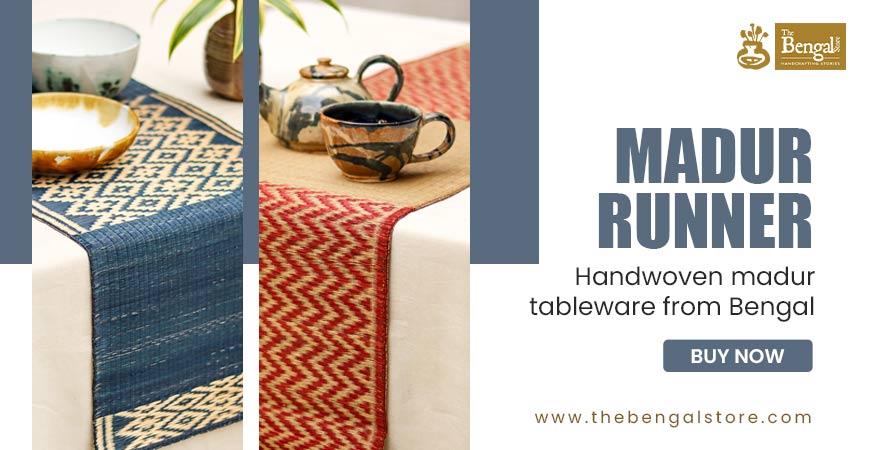Khesh Weaving – An Enduring Eco-Conscious Art from Bengal - GetBengal Story

In this rapidly changing world convenience foods and packaged snacks make up the majority of the meals we make, once and again we forget the simplicity of nurturing our bodies and minds. Healthy eating is not a habit or a diet; it is a lifestyle or choice to fuel our bodies and minds. Colorful vegetables, fresh fruit, whole grains, nuts, and seeds are not just food, they are vitamins, energy, strength, and stamina. Meals that are prepared mindfully, tastefully, and thoughtfully will energize you for a long day, help concentrate your mind for a lasting period and will keep your spirits high and immunity strong.
At the core of Khesh is the idea of reusing old fabrics. Khesh begins with old cotton sarees - pieces of clothing that have once carried everyday warmth. The sarees are hand torn into long, thin strips (chindi) and the weaver will put on new yarn on the loom as warp and the strips of sarees will be used as the weft. As the weaver moves the loom, old memories have a chance to get woven into a new thread. This combination of histories creates fabric with depth of texture and unexpected beauty. Khesh is not duplicated; each Khesh has a story of its own.

Historically, Khesh developed out of need. Rural families repaired old sarees to produce everyday fabrics that are strong and durable. What began as a necessity of thrift, Khesh today has evolved into a desirable sustainable design. With its rustic charm and sustainable characteristics, Khesh fabric has attracted the attention of admirers well beyond Bengal. Sarees, stoles, dresses and upholstery - Khesh now has designers interested in a piece that at one time represented not just lineage, but timeless, stylish fabric.
Experiencing Khesh is special because it spans generations. For the older generation, it grounds them in modesty and simplicity, where nothing had a waste, and every touch had meaning and every single strand had a purpose. For the younger generation, it shows climate friendly and sustainable fashion, recycling, and cultural heritage. It connects the old to the new and shows us that tradition can be fashionable and sustainable fabric can be beautiful.
Khesh weaving also offers great learning potential. For artisans, it allows them to keep the craft of handloom weaving alive while experimenting with color and patterns. For students and enthusiasts, it presents an example of sustainable living, while learning about the rich craft history of Bengal. Today's workshops and training programs are about building awareness and teaching how discarded sarees can take on a new life as a purposeful and fashionable fabric.
Thus, Khesh is much more than a textile, it is a philosophy. Khesh teaches us that beauty is not always based on the new and that sometimes it is based on reimagining the old. It tells us that if cared for, tradition can become relevant and timeless, generation after generation.










